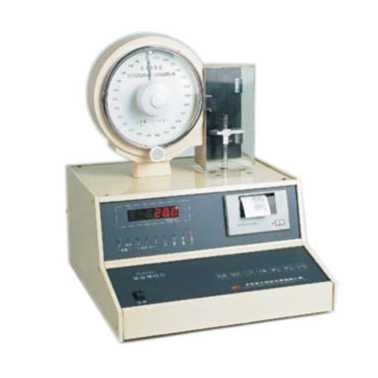Analysis of fiber curl index and calculation

Fibers have natural fibers and synthetic fibers. Natural fiber cotton with natural curling, wool also specific to this feature. The general synthetic fiber surface smooth, small friction, poor cohesion, spinning processing difficulties, so in the post-processing with mechanical, chemical or physical methods, so that the fiber has a certain curl.Believe at the moment you must be curious about what is curl? What is the role of curl? Let us discuss the following: Curl can make the short fiber spinning fiber friction between the friction and cohesion, so that the yarn has a certain strength. Curl can also improve the flexibility of fibers and textiles, make the feel soft, highlight the fabric style. At the same time curling on the fabric of the crease resistance, warmth and surface gloss have improved.
Now a preliminary understanding of the fiber curl is what and its specific role, you must have doubts: how to make the fiber has a certain curl it? Mechanical plus curl early gear method, because the ripple is too large, the fiber curl effect is not good, is now less used. At present, the main method of mechanical curling is packing method, the tow will be pushed into the crimping box, the tow at the exit with the pressure to withstand, forcing the fiber bending, forming a two-dimensional plane curl. Vinyl in the hot air and hot water treatment when the curl, said hot air curl and hot water curl. With two kinds of liquid or polymer into a fiber on both sides of their contraction performance is different, after forming or heat treatment on both sides of the different stresses to form a curl, the curl can be expressed as three-dimensional space of the three-dimensional curl. Chemical filament by the ordinary silk by bombs, but also another way to add curl, but the purpose of bomb disposal is not for the textile processing needs, but to change the style of the textile, it has a thick texture, the appearance of cashmere And other characteristics, improve the use of fiber performance.
In the daily inspection process, the specific fiber curl detection has a corresponding curl index and calculation method:
(A) the number of curl:The number of crimps is the number of crimps per unit length, and the light load is 0.0018cN / dtex. It is calculated as follows:
Jn = JA / (2 * 2.5)Where Jn is the number of crimps (per cm); JA is the total number of crimps and crimps in the fiber within 25 mm.The two adjacent peaks of the fiber are a curl, and the number of crimps affects the cohesion and the coefficient of friction during spinning. But the curl should not be too much, too much curl will increase the electrostatic interference, drawing difficulties, the general chemical fiber curl number of 4 to 6 / cm.
(2) curl rate:The index that indicates the degree of curl is related to the number of crimps and the depth of the curl.
J = [(L1 - L0) / L1] * 100%Where J is the crimp rate of the fiber. L0 is the length (mm) of the fiber measured at light load. L1 is the length (mm) of the fiber measured under heavy load.Light load of 0.0018cN / dtex; heavy load: vinylon, nylon, polypropylene, polyvinyl chloride and other 0.05cN / dtex; polyester, lacquer is 0.075cN / dtex.General chemical fiber curl control in 10% to 15%.
Measurement of crimp elasticity can be used for fiber crimp elasticity. The instrument used to determine 1 ~ 22dtex fiber curl, curl elasticity, curl recovery rate and their statistical values, with display and print function.

2017-04-07 16:44

